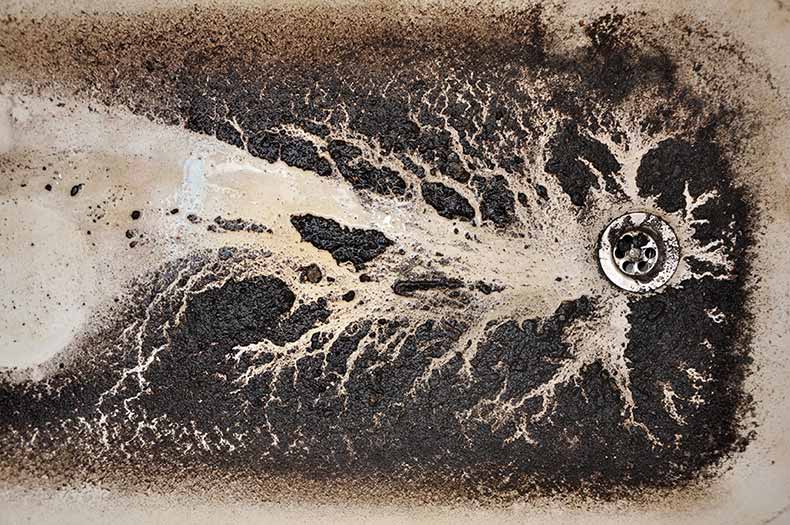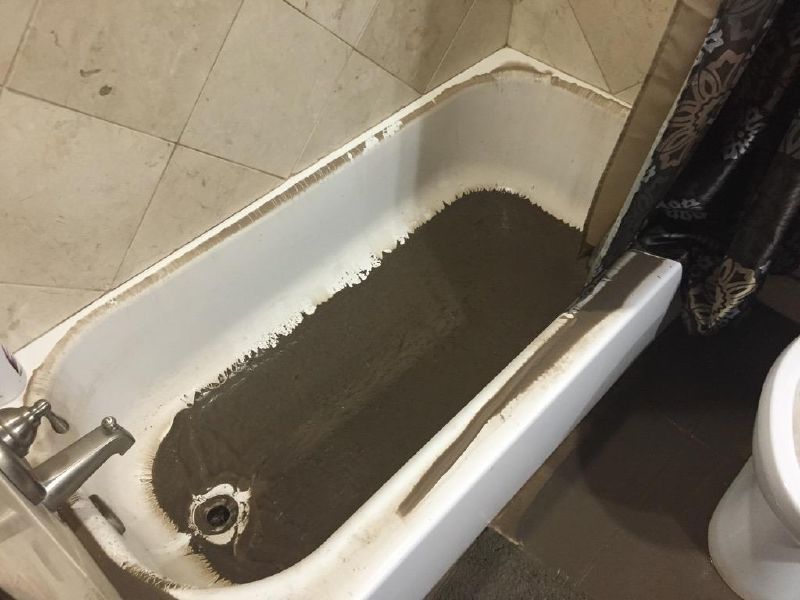Key Explanations for Sewage in the Bathtub
Key Explanations for Sewage in the Bathtub
Blog Article
They are making several great points on What To Do If Sewage Starts Backing Up Into the Shower in general in this great article beneath.

Sewage backup in the tub can be a distressing and unhygienic problem for any kind of property owner. Not only is it bothersome, yet it also poses major health threats and indicates underlying problems with the plumbing system. Comprehending why sewage is coming up with the tub is important for taking suitable action to resolve the problem properly.
Intro to the Concern
Usual Reasons for Sewer Backup
Obstructions in the Drain Line
Among the most usual causes of sewage back-up is an obstruction in the drain line. This can occur due to the buildup of particles, oil, or international things in the pipes, preventing proper circulation and causing sewage to back up into your bathtub.
Tree Root Invasion
Tree origins seeking moisture and nutrients can penetrate sewage system lines via tiny fractures or joints. Gradually, these roots can grow and broaden, creating significant damage to the pipes and resulting in sewage backup issues.
Comprehending the Issue
When sewage draws back up right into the bath tub, it's a clear sign of an issue with the drain system. The wastewater that needs to be streaming away from your home is rather finding its back right into your space, which can lead to considerable damages and health hazards.
Prospective Causes
Several elements can add to sewage back-up in the bath tub. From obstructions in the drain line to problems with the plumbing framework, recognizing the root cause is essential for finding a solution.
Aging Framework
Older homes may have dated plumbing systems that are more susceptible to deterioration, fractures, and wear and tear. As pipes age, they come to be much more vulnerable to leaks and blockages, increasing the likelihood of sewage back-up events.
Heavy Rainfall or Flooding
Throughout periods of heavy rainfall or flooding, the sewer system may come to be overwhelmed with excess water, causing back-ups and overflows. This can lead to sewage backing up right into bathtubs and various other components inside the home.
Signs of Sewer Backup
Foul Odors
Undesirable smells rising from drains or fixtures, particularly in the washroom, may indicate sewage back-up problems. These smells are typically strong and persistent, signifying a problem that calls for prompt interest.
Slow Draining Fixtures
Bath tubs, sinks, and commodes that drain pipes gradually or otherwise in any way could be experiencing sewer backup. If several components are affected at the same time, it's most likely that the concern stems from a common factor, such as the main drain line.
Gurgling Noises
Strange gurgling or gurgling sounds originating from drains when water is running somewhere else in the house are indicative of air entraped in the plumbing system. This air buildup can result from sewer backup and ought to be examined promptly.
Health And Wellness Threats Connected With Sewage Back-up
Contamination of Supply Of Water
Sewer backup can contaminate the water in your house, posturing a serious health and wellness threat to you and your family. Direct exposure to infected water can lead to intestinal concerns, skin infections, and various other health problems.
Mold Development
Dampness from sewage back-up can produce optimal problems for mold development in your home. Mold and mildew spores can worsen respiratory system issues and create allergic reactions in delicate people, making punctual cleaning essential.
Spread of Disease
Sewage consists of hazardous bacteria, infections, and parasites that can trigger a series of diseases, consisting of liver disease, cholera, and gastroenteritis. Entering into contact with sewage or infected surfaces puts you at risk of infection.
Tidying up After Sewer Back-up
Sanitation Procedures
Completely sanitize and sanitize influenced locations after sewage backup to eliminate damaging germs and protect against mold and mildew development. Usage suitable cleaning items and protective equipment to make sure safe and effective cleanup.
Remediation of Affected Areas
Fix any type of damages to flooring, walls, or components triggered by sewage backup. Relying on the degree of the damage, you may need to change carpeting, drywall, or other products to restore your home to its pre-loss condition.
Immediate Actions to Take
Switching Off Water
In the event of sewage backup, it's important to shut off the water to prevent further contamination and damages. Situate the main water shutoff valve in your home and closed it off till the problem can be fixed.
Contacting a Professional Plumber
Handling sewage back-up is not a do it yourself job. Get in touch with a licensed plumber with experience in taking care of sewage-related issues to examine the scenario and do essential fixings or cleanups.
Avoiding Contact with Polluted Water
Till the sewage backup is solved, stay clear of contact with polluted water to prevent the spread of germs and pathogens. Use safety equipment if you must remain in the afflicted area and wash your hands extensively afterward.
Safety nets
Normal Upkeep of Sewer Lines
Set up routine examinations and upkeep of your sewer lines to recognize and address potential issues prior to they intensify right into major issues. This can consist of cleaning debris, inspecting for tree root intrusion, and repairing any type of broken pipes.
Setting Up Bayou Valves
Take into consideration setting up backwater valves in your plumbing system to stop sewer from receding into your home throughout periods of heavy rainfall or flooding. These valves immediately close when water draws back up, safeguarding your home from contamination.
Appropriate Disposal of Family Waste
Prevent purging anything other than toilet tissue and human waste down the toilet to prevent blockages and clogs in the drain line. Dispose of grease, oil, and various other house chemicals properly to minimize the threat of plumbing issues.
Why Is Water Backing Up in My Bathtub When I Flush My Toilet?
What to do about a sewer line clog
First, don’t bother with plunging. No amount of plunging will dislodge the clog in a sewer line. The clog is too far away. Plungers are for clogs in the toilet itself, not the sewer line. Plus, the most likely causes of a sewer clog are:
Tree roots Flushed toys or feminine products Grease buildup Those items don’t move easily. And in the case of tree roots, the roots need to be cut out of the pipe and the pipe will need to be repaired.
You’ll need a closet auger. A closet auger is a type of plumber’s snake with a protective cover to keep from scratching the delicate porcelain toilet. If the clog is further down, you may need to remove the toilet or use one of your cleanouts to get to the clog.
We also recommend doing a video inspection of the drain to ensure that the cause of the clog has been completely removed. Otherwise, you could have the same problem again in a few days or weeks.
https://mspplumbingheatingair.com/blog/why-is-water-backing-up-in-my-bathtub-when-i-flush-my-toilet

I'm very involved in Why is Sewage Backing Up Into My Bathtub? and I am praying you enjoyed reading my article. In case you liked our page kindly consider to pass it around. Kudos for your time. Don't forget to stop by our blog back soon.
Click Here
Report this page